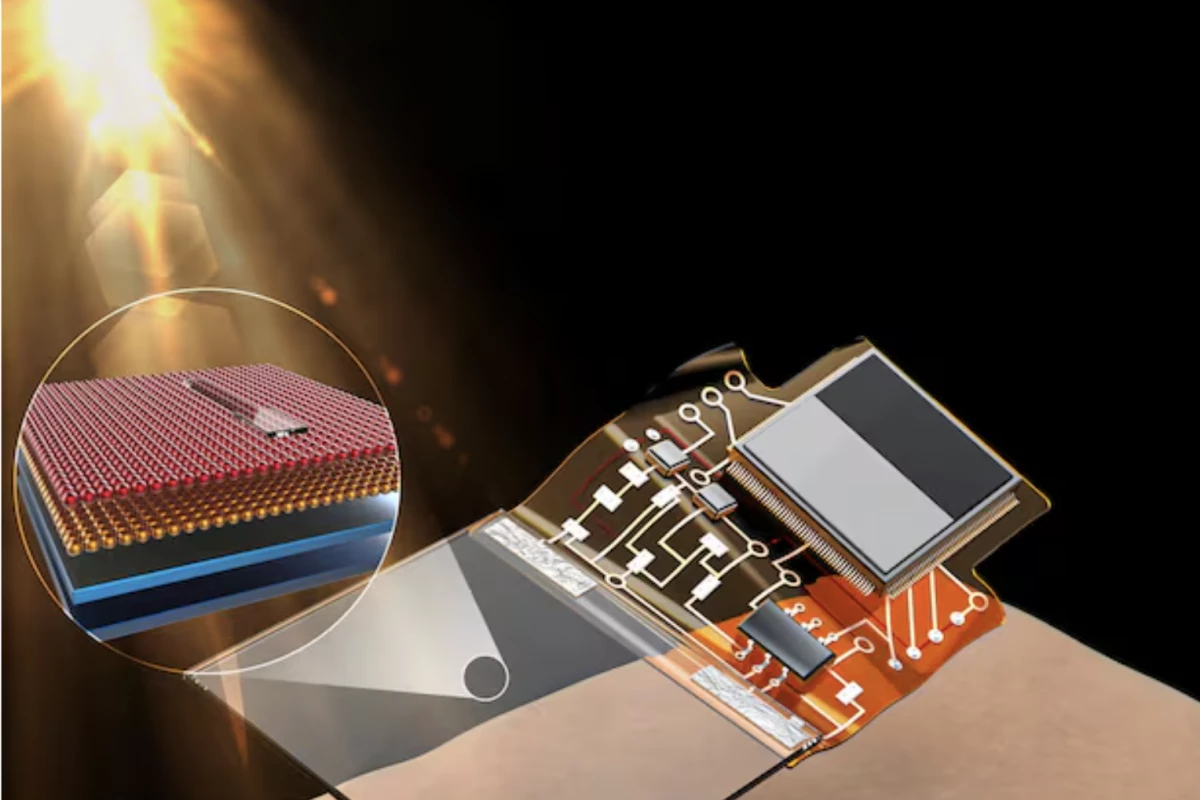Scientists have developed a fully transparent skin sensor that accurately measures UV radiation, detecting light and converting it to electrical signals. So when the Sun's rays reach damaging levels, an alert is triggered on the user's smartphone that it's time to cover up.
A research team led by Professor Kang Sung-jun at Kyung Hee University, South Korea, has created a high-performing, precise, see-through sensor that detects ultraviolet A (UVA) exposure. While ultraviolet (UV) radiation is defined by three types based on their wavelengths – UVA, UVB and UVC – UVA is the most dangerous, bypassing the ozone layer and penetrating deep into our skin. And because UVA rays reach deeper into skin, they can cause premature aging, wrinkles and some skin cancers.
While sun-detecting devices aren't new, the researchers note that opaque wearables are unable to accurately measure the amount of transmitted UVA light, as only a small amount passes through the sensor. It also makes this technology difficult to adapt to existing devices like smart glasses. Because it's also lightweight, the sensor could be incorporated into clothing, bracelets and watches.
“If it is applied to smartwatches or fitness bands in the future, ultraviolet management will be possible even during everyday outdoor activities,” noted the researchers. “It will greatly help prevent skin cancer and support skin health management.”
The team began construction with a transparent glass base and added see-through oxide semiconductors that only reacted to UVA light. Finally, a transparent indium tin oxide film provided the electrical circuit for the small detector, which could be easily merged with existing wearables.
"In this study, a fully transparent oxide semiconductor–based photodiode was developed, which achieves high transmittance in the visible spectrum and selective UV detection with peak responsivity at 340 to 350 nm," the researchers wrote.
The team connected the device to a circuit board with an amplifier – to boost faint UVA signals – and a Bluetooth chip to send real-time data to a user's smartphone.
“With the transparent ultraviolet sensor, we can accurately identify an individual’s ultraviolet exposure, allowing advance warnings and prevention of diseases such as skin cancer, photoaging, and cataracts,” said Kang. “In the future, this could strengthen Korea’s technological competitiveness across the transparent electronics and optical sensor industries.”
The UVA-detector prototype was tested in sunlight on both clear and cloudy days, and the readings mirrored expert UV monitoring equipment. The UVA data was then sent to the user's smartphone, where the accumulated exposure was calculated and warned the wearer when levels reached 80% of what it takes to burn. This warning acts as a sign that it's time to apply more sunscreen or take cover.
"This health care device, integrated with a smartphone, demonstrates its potential as a practical approach to prevent risks associated with prolonged UV exposure," the researchers wrote. “This technology will serve as a real-time monitoring tool that complements the limits of sunscreen.”
The research was published in the journal Science Advances.
Source: Kyung Hee University via TechXplore and ChosunBiz





